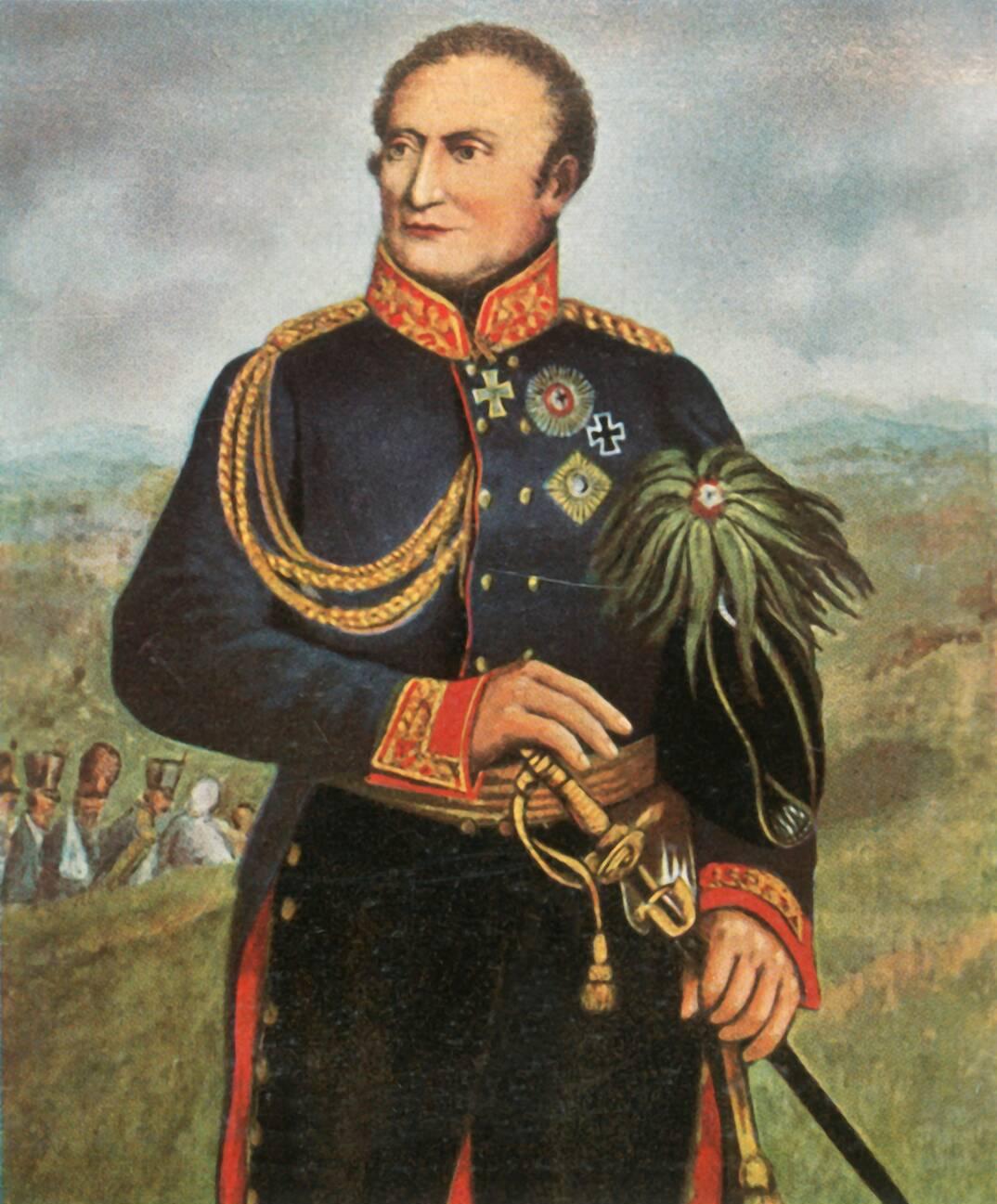Friedrich Graf Kleist von Nollendorf
Friedrich Graf Kleist von Nollendorf | |
|---|---|
 Friedrich von Kleist, woodcut by Hermann Scherenberg, 1863 | |
| Born | 9 April 1762 Berlin, Kingdom of Prussia, Holy Roman Empire |
| Died | 17 February 1823 (aged 60) Berlin, Kingdom of Prussia, German Confederation |
| Allegiance | Kingdom of Prussia |
| Service/ | Royal Prussian Army |
| Rank | Generalfeldmarschall ("Field marshal") |
| Commands held | North German Corps |
| Wars | |
| Awards |
|

Friedrich Emil Ferdinand Heinrich Graf Kleist von Nollendorf (9 April 1762 – 17 February 1823), born and died in Berlin, was a Prussian field marshal and a member of the old junker family von Kleist.[1]
Biography[]
Kleist entered the Prussian Army in 1778 and served in the War of the Bavarian Succession and the French Revolutionary Wars. By 1799, Kleist had been promoted to major and was put in command of a battalion of grenadiers.
Kleist served in the Napoleonic Wars and fought at Jena. In 1807 he went on extended leave but by 1808 he was put in command of an infantry brigade and the next year he was made commandant of Berlin. During the War of Liberation he was given a corps with which he fought in the battles of Kulm and Leipzig. In 1814, he was given the title Count of Nollendorf (from the German name of the town , now part of Petrovice in the Czech Republic) for his decisive role in this battle.
After Leipzig, Kleist blockaded the fortress of Erfurt, bringing about its surrender after which, in early 1814, he marched his troops into France, where his corps was attached to Blücher's army. He then fought in the battle of Laon and in the attack on Paris. At the end of the war Kleist was promoted to the rank of General der Infanterie. During the Hundred Days, Kleist was given command of a Prussian corps (the North German Corps) which was to operate independently from Blücher's Army of the Lower Rhine; he was therefore not involved in the battles of Ligny and Waterloo.
Two years before his death he was promoted to the rank of Generalfeldmarschall ("field marshal").
Notes[]
This article needs additional citations for verification. (March 2014) |
- ^ Regarding personal names: Graf was a title before 1919, but now is regarded as part of the surname. It is translated as Count. Before the August 1919 abolition of nobility as a legal class, titles preceded the full name when given (Graf Helmuth James von Moltke). Since 1919, these titles, along with any nobiliary prefix (von, zu, etc.), can be used, but are regarded as a dependent part of the surname, and thus come after any given names (Helmuth James Graf von Moltke). Titles and all dependent parts of surnames are ignored in alphabetical sorting. The feminine form is Gräfin.
References[]
- Meerheimb, F. von (1882), "Kleist von Nollendorf, Friedrich", Allgemeine Deutsche Biographie (ADB) (in German), 16, Leipzig: Duncker & Humblot, pp. 124–127
- Günter Richter (1980), "Kleist von Nollendorf, Friedrich Heinrich Graf", Neue Deutsche Biographie (in German), 12, Berlin: Duncker & Humblot, pp. 27–28; (full text online)
Further reading[]
| Wikimedia Commons has media related to Friedrich von Kleist. |
- Kleist, Georg von (2013). "Das Leben des Generalfeldmarschalls Grafen Kleist von Nollendorf". In Kleist, Sigurd von (new editor) (ed.). Geschichte des Geschlechts v. Kleist Dritter Teil – Biographien bis 1880 Fünfte Abteilung (PDF) (in German) (1887 First ed.). Bergisch Gladbach. (PDF; 2,1 MB)]
- Pflugk-Harttung, Julius von (1911). Das preußische Heer und die Norddeutschen Bundestruppen unter General v. Kleist 1815. Gotha.
- Priesdorff, Kurt von. Soldatisches Führertum (in German). 3. Hamburg: Hanseatische Verlagsanstalt. pp. 311–320.
- Denkmal in Merseburg
- 1762 births
- 1823 deaths
- Counts of Germany
- Kleist family
- Field marshals of Prussia
- Prussian commanders of the Napoleonic Wars
- Military personnel from Berlin
- People from the Margraviate of Brandenburg
- Recipients of the Order of St. George of the Second Degree